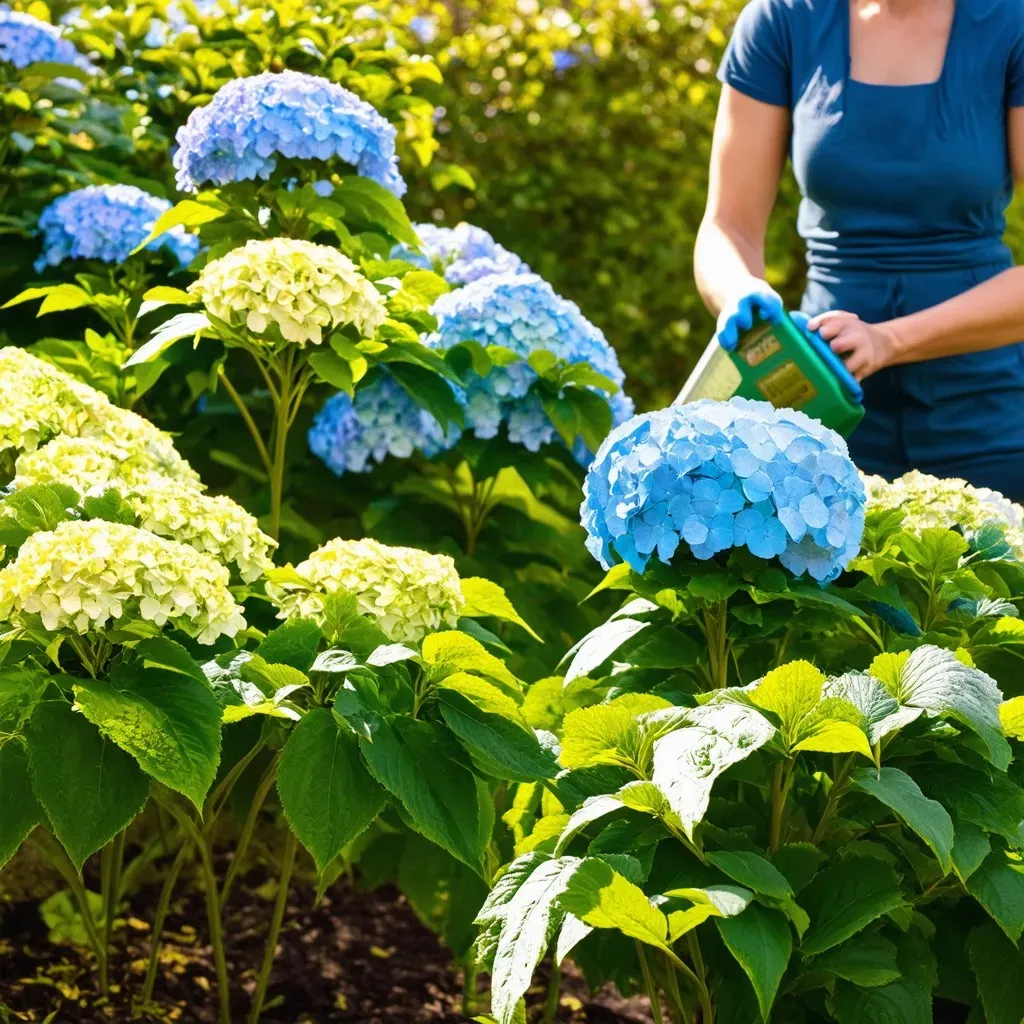hydrangea fertilizer is vital for ensuring the vibrant growth and stunning blooms of these beloved garden shrubs. Proper fertilization can not only promote healthy foliage but also influence the flower color, making hydrangeas a dynamic choice for any landscape.
Understanding Hydrangea Nutrient Needs
To help hydrangeas flourish, it is essential to understand their nutrient requirements. Hydrangeas typically thrive in well-draining soil rich in organic matter. They require the right balance of nitrogen (N), phosphorus (P), and potassium (K) for optimal growth. A general NPK ratio of 10-10-10 or 5-10-5 is recommended for hydrangeas.
Nutrient Breakdown
| Nutrient | Role in Plant Growth |
|---|---|
| Nitrogen (N) | Promotes leafy growth and green foliage |
| Phosphorus (P) | Supports root development and flower production |
| Potassium (K) | Enhances overall plant resilience and drought tolerance |
Hydrangeas also benefit from micronutrients, including magnesium and iron, which play crucial roles in photosynthesis and overall vitality.
When to Fertilize Hydrangeas
Knowing when to fertilize hydrangeas is as important as what to use. The best time to feed these plants is in early spring when soil temperatures begin to rise. At this point, the plants are waking up from dormancy and will readily absorb nutrients.
Fertilizing Schedule
| Season | Best Practices |
|---|---|
| Early Spring | Start with a balanced fertilizer and apply according to package instructions. |
| Mid-Spring | Consider a second application if using a slow-release fertilizer. |
| Summer | Monitor plant health; a light, monthly dose of liquid fertilizer may be beneficial. |
| Fall | Avoid fertilization in late fall to prevent tender new growth that might be damaged by frost. |
Relationship Between Soil pH and Flower Color
AnOther fascinating aspect of hydrangeas is their ability to change color based on soil pH. In acidic soils (pH 5.5 or lower), bigleaf hydrangeas typically produce blue flowers. Conversely, in alkaline soils (pH 6.5 or higher), blooms shift towards pink.
To modify soil pH, gardeners can use specific fertilizers or soil amendments:
- Aluminum Sulfate for blue flowers (lowers pH)
- Lime for pink flowers (raises pH)

Reference Video
Choosing the Best Fertilizer for Hydrangeas
With a myriad of fertilizers available, selecting the right one can be daunting. Here’s a comparison of some popular types.
Organic vs. Synthetic Fertilizers
| Fertilizer Type | Advantages | Disadvantages |
|---|---|---|
| Organic | Environmentally friendly, enriches soil health | Slower acting, may require more frequent applications |
| Synthetic | Fast-acting, precise nutrient amounts | Can leach into groundwater, may harm beneficial soil organisms |
Recommended Products
- Espoma Holly Tone: Great for acid-loving plants; contains organic ingredients.
- Miracle-Gro Water Soluble Bloom Booster: Provides immediate results; ideal during the blooming period.
- Ocean Harvest Organic Fertilizer: A natural option rich in trace elements.
Methods for Applying Hydrangea Fertilizer
Applying fertilizer correctly ensures maximum absorption and minimizes waste. Here are three effective methods:
1. Granular Fertilizer Application
- How to Apply: Scatter the granules evenly around the base of the plant, avoiding direct contact with the stem. Follow package instructions for quantity.
- Tips: Water thoroughly after application to help the fertilizer penetrate the soil.
2. Liquid Fertilizer
- How to Apply: Mix the liquid fertilizer with water according to the instructions and apply it as a soil drench.
- Benefits: This method offers rapid nutrient absorption and is perfect for plants that are already established and blooming.
3. Slow-Release Fertilizer
- How to Apply: Typically applied in spring and releases nutrients steadily over time, reducing the frequency of applications.
- Advantages: Promotes consistent growth without the risk of over-fertilization.

Maintaining Healthy Hydrangeas Year-Round
Regular monitoring of your hydrangeas is crucial. Look for signs of nutrient deficiencies, such as yellowing leaves or stunted growth. Here’s a quick reference list of what deficiencies might indicate:
Nutrient Deficiency Symptoms
| Symptom | Possible Cause |
|---|---|
| Yellowing Leaves | Nitrogen deficiency or poor drainage |
| Weak Blooms | Lack of phosphorus or potassium |
| Dark Green Leaves | Excess nitrogen |
| Leaf Drop | Over-fertilization or fungal disease |
Feed your hydrangeas with care, and they will reward you with stunning blooms season after season.
Frequently Asked Questions (FAQ)
What is the best fertilizer for hydrangeas?
The best fertilizer for hydrangeas varies based on specific needs, but a balanced 10-10-10 fertilizer or specialized hydrangea food are excellent choices.
How often should I fertilize hydrangeas?
Hydrangeas are typically fertilized at least twice during the growing season: once in early spring and once mid-summer.
Can I use compost as a hydrangea fertilizer?
Yes! Compost is an excellent organic option that enriches soil and provides essential nutrients.
Is it safe to fertilize hydrangeas in the fall?
No, it’s best to avoid fertilizing hydrangeas in the fall as this can encourage tender new growth susceptible to frost damage.


